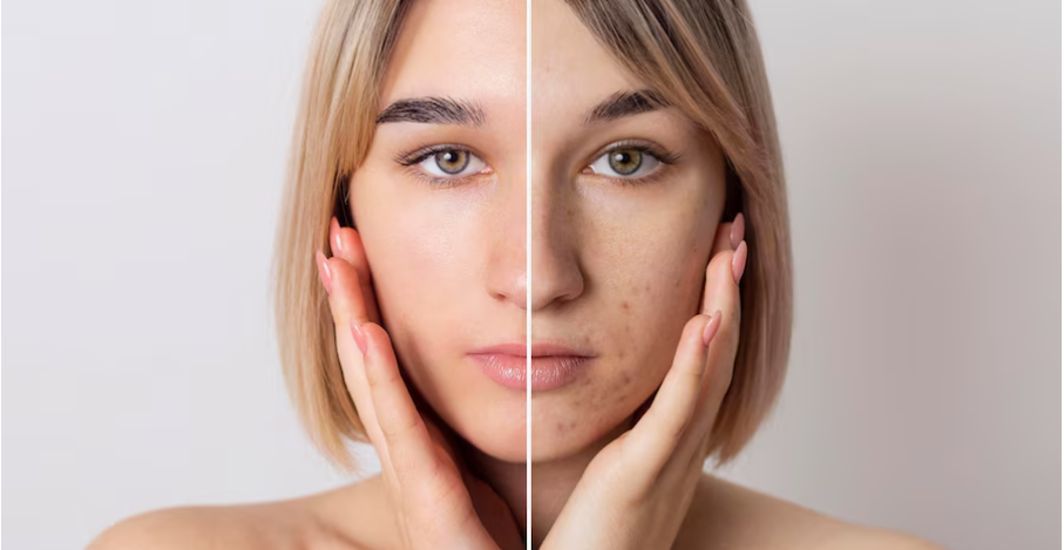Diabetes Management
Genetic Testing May Help Determine the Cause for Type 1 Diabetes
3 min read
By Apollo 24/7, Published on - 31 May 2021, Updated on - 11 December 2023
Share this article
0
0 like

Diabetes is a global disease burden prevalent in almost every country of the world. Diabetes is characterised by an abnormal increase in blood sugar levels either due to the destruction of insulin-producing beta cells (type 1 diabetes) or due to the inability of the body to absorb insulin (type 2 diabetes). Insulin is a hormone that helps in maintaining blood sugar levels by converting it to energy.
While type 2 diabetes is generally the result of a sedentary lifestyle and unhealthy eating habits, type 1 diabetes is believed to be an autoimmune disorder where the immune system destroys the beta cells of the pancreas completely. However, in a recent study, scientists from the University of California San Diego School of Medicine stated that a specific cellular dysfunction could be responsible for type 1 diabetes.
The recent study
The research published in the journal Nature on 19th May 2021 conducted the largest genome-wide association study (GWAS) of type 1 diabetes by analysing 5,20,580 samples and combined the results with the epigenomic maps of peripheral blood mononuclear cells (a type of stem cells found in bone marrow) and the cells of the pancreas.
Note: GWAS is a study to research the specific change in genetics that lead to a specific disease. On the other hand, epigenomics is a mapping system that determines when the genes are turned on and off in cells. Epigenomics helps in determining the production of proteins that are necessary for specific functions of the cells.
Scientists examined 4,48,142 cis-regulatory elements in the pancreas and peripheral blood mononuclear cells. The cis-regulatory element (CRE) is a non-coding DNA, which means it does help in the formation of protein. However, any change or mutation in the CREs of a gene can result in a particular disease.
The results of the study
The researchers found that disease variants of type 1 diabetes were located in the T cells (a type of immune cells) and acinar and ductal cells of the exocrine pancreas. This means that there is a role of exocrine cells of the pancreas in the development of type 1 diabetes.
The pancreas has two types of cells; endocrine and exocrine. While endocrine cells produce insulin-releasing beta cells, the exocrine cells produce enzymes for the digestion of food. In this study, scientists concluded that the destruction of beta cells could be due to the dysfunction of the exocrine cells of the pancreas.
Can type 1 diabetes be cured?
There is no cure for type 1 diabetes yet. However, several therapies are being used to manage and treat the condition, some of which include:
- Insulin injections: It is the most widely used treatment for type 1 diabetes. Artificially made insulin helps in maintaining the levels of blood sugar levels of the body.
- Artificial pancreas: An artificial device that mimics the function of the pancreas by releasing insulin.
- Monoclonal antibodies: These are antibodies that prevent the attack of immune cells on the beta cells of the pancreas.
- Beta-cell macro and micro-encapsulation: In this therapy, the diabetic person is given macro/microcapsules containing islets of Langerhans, which carry beta cells. These cells then release insulin into the body.
- Stem cell transplant: In this therapy, stem cells, which can transform into beta cells, are given to the diabetic patient. These cells also improve the immune system of the body, thus improving the function of the remaining beta cells.
Conclusion
With this study, scientists concluded that though there is a significant role of the exocrine pancreas in the development of type 1 Diabetes. However, more large scale GWAS and epigenomics must be conducted to understand the cellular origin of this complex disease. Meanwhile, people who have family members suffering from type 1 diabetes must check their blood sugar levels frequently, as Type 1 diabetes is known to be genetically transferred. People suffering from type 1 diabetes must consult with their doctor regarding possible treatment options for their condition.
You can also try the Apollo 24|7 Diabetes Self-Management Tool to log your sugar values, track patterns, know all about food nutrition and more.
Diabetes Management
Consult Top Diabetologists
View AllLeave Comment
Recommended for you
.jpg?tr=q-80)
Diabetes Management
Yoga in Diabetes: Your Partner in Care for a Stronger Body and Mind
Yoga is considered to have a holistic effect on one’s mind & body and can provide many benefits. It offers multiple benefits for individuals affected with diabetes. Regular practice can help manage blood glucose levels, maintain a healthy weight, and improve blood circulation and insulin sensitivity. Additionally, yoga's focus on mental awareness can help individuals better manage their stress levels, which is crucial for maintaining healthy blood sugar control. Variance in stress impacts blood sugar control. Overall, yoga seems to be a valuable tool for managing diabetes holistically and effectively.

Diabetes Management
Is the Risk of Developing Diabetes Higher in the Late Thirties?
While the risk of developing Type 1 diabetes for individuals in their late thirties is relatively low, Type 2 diabetes risk tends to increase. Factors contributing to this risk include metabolic changes, lifestyle choices, genetic reasons, hormonal shifts, and stress. To mitigate this risk, adopting a healthy lifestyle, regular checkups, stress management, and awareness of family history are crucial. Proactive measures can significantly reduce the risk of diabetes as individuals enter their late thirties and beyond.

Diabetes Management
Can Diabetes Cause Hyperpigmentation?
Are you noticing dark patches on your skin lately? It could be a sign of diabetes-induced hyperpigmentation. From Acanthosis Nigricans to Diabetic Dermopathy, diabetes can lead to several types of hyperpigmentation. Proper diabetes management, regular monitoring of blood sugar levels and a gentle skincare routine aided by plans like the Apollo Super 6 programme, can help reduce these skin changes.
Subscribe
Sign up for our free Health Library Daily Newsletter
Get doctor-approved health tips, news, and more.
Visual Stories

8 Fruits That are Incredibly Healthy for Diabetes
Tap to continue exploring
Recommended for you
.jpg?tr=q-80)
Diabetes Management
Yoga in Diabetes: Your Partner in Care for a Stronger Body and Mind
Yoga is considered to have a holistic effect on one’s mind & body and can provide many benefits. It offers multiple benefits for individuals affected with diabetes. Regular practice can help manage blood glucose levels, maintain a healthy weight, and improve blood circulation and insulin sensitivity. Additionally, yoga's focus on mental awareness can help individuals better manage their stress levels, which is crucial for maintaining healthy blood sugar control. Variance in stress impacts blood sugar control. Overall, yoga seems to be a valuable tool for managing diabetes holistically and effectively.

Diabetes Management
Is the Risk of Developing Diabetes Higher in the Late Thirties?
While the risk of developing Type 1 diabetes for individuals in their late thirties is relatively low, Type 2 diabetes risk tends to increase. Factors contributing to this risk include metabolic changes, lifestyle choices, genetic reasons, hormonal shifts, and stress. To mitigate this risk, adopting a healthy lifestyle, regular checkups, stress management, and awareness of family history are crucial. Proactive measures can significantly reduce the risk of diabetes as individuals enter their late thirties and beyond.

Diabetes Management
Can Diabetes Cause Hyperpigmentation?
Are you noticing dark patches on your skin lately? It could be a sign of diabetes-induced hyperpigmentation. From Acanthosis Nigricans to Diabetic Dermopathy, diabetes can lead to several types of hyperpigmentation. Proper diabetes management, regular monitoring of blood sugar levels and a gentle skincare routine aided by plans like the Apollo Super 6 programme, can help reduce these skin changes.

